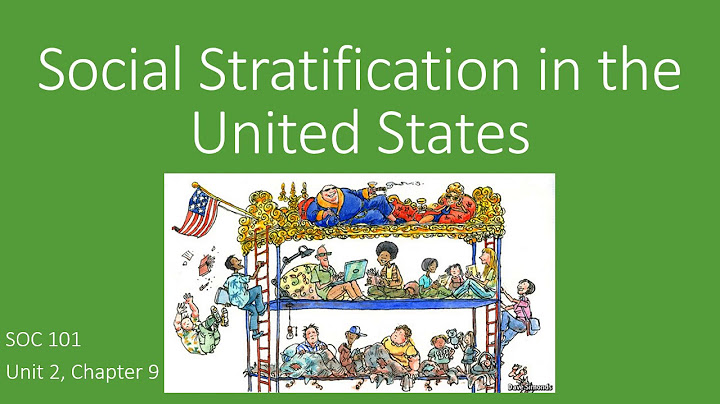ORGANIZATIONAL COMMITMENTObjectives:*Define Organizational commitment. Understand withdrawal behavior? And, how the two are connected.*Three types of organizational commitment and how do they differ?*Four primary responses to negative events at work*Examples of Psychological withdrawal? Of physical withdrawal? How do the different forms of withdrawal relate to each other?*How workplace trends are affecting organizational commitment in today’s organization*How can organizations foster a sense of commitment among employees? Show
Organizational Commitment: the desire on the part of an employee to remain a member of the organization. Organizational commitment sits side by side with job performance in our integrative model of organizational behavior.It influences whether an employee stays a member of the organization (is retained) or leaves to pursue another job ( turns over)-Employees who are not committed to their organizations engage in withdrawal behavior,a set of actions that employees perform to avoid the work situation-behaviors that may eventually culminate in quitting the organization. Types of Commitment:Affective Commitment;( emotion-based): -a desire to remain a member of an organization due to an emotional attachment to, and involvement with, that organization. ( Feelings about friendships, the atmosphere or culture of the company, and a sense of enjoyment when completing job duties)Continuance commitment; ( cost-based): -a desire to remain a member of an organization because of an awareness of the costs associated with leaving it.( issues of salary, benefits, and promotions as well as concerns of other family members) Normative Commitment: ( Obligation-based): -a desire to remain a member of an organization due to a feeling of obligation. ( a sense of debt that is owed to a boss, a colleague, or the larger company.-All the three organizational commitment combine to create an overall sense of psychological attachment to the company. Of course different people will relate and weigh the three types differently.Focus of Commitment: refers to the various people, places, and things that can inspire a desire to remain a member of an organization. Drivers of Commitment: -Affective commitment; employees who feel a sense of affective commitment identify with the organization, accept that organization’s goals and values, and are more willing to exert extra effort on behalf of the organization. -By identifying with the organization, they come to view organizational membership as important to their sense of self. Erosion model; employees with fewer bonds will be most likely to quit the organization.From an affective commitment perspective, that employee is likely to feel less emotional attachment to work colleagues, which makes it easier to decide to leave the organization. Upload your study docs or become a Course Hero member to access this document Upload your study docs or become a Course Hero member to access this document End of preview. Want to read all 17 pages? Upload your study docs or become a Course Hero member to access this document journal article Exit, Voice, Loyalty, and Neglect as Responses to Job Dissatisfaction: A Multidimensional Scaling StudyThe Academy of Management Journal Vol. 26, No. 4 (Dec., 1983) , pp. 596-607 (12 pages) Published By: Academy of Management https://doi.org/10.2307/255909 https://www.jstor.org/stable/255909 Read and download Log in through your school or library Read Online (Free) relies on page scans, which are not currently available to screen readers. To access this article, please contact JSTOR User Support. We'll provide a PDF copy for your screen reader.With a personal account, you can read up to 100 articles each month for free. Get StartedAlready have an account? Log in Monthly Plan
Yearly Plan
Purchase a PDFPurchase this article for $29.00 USD. How does it work?
Abstract This study focuses on workers' responses to job dissatisfaction. It is suggested that four theoretical categories--exit, voice, loyalty, and neglect--characterize a diverse group of more specific behaviors (e.g., turnover, absenteeism, lateness, talking to supervisor, requesting a transfer). A multidimensional scaling analysis (MDS) of collected data supports the categories. Journal Information The Academy of Management Journal presents cutting edge research that provides readers with a forecast for new management thoughts and techniques. All articles published in the journal must make a strong empirical and/or theoretical contribution. All empirical methods including (but not limited to) qualitative, quantitative, or combination methods are represented. Articles published in the journal are clearly relevant to management theory and practice and identify both a compelling practical management issue and a strong theoretical framework for addressing it. For more than 40 years the journal has been recognized as indispensable reading for management scholars. The journal has been cited in such forums as The Wall Street Journal, The New York Times, The Economist and The Washington Post. The journal is published six times per year with a circulation of 15,000. Publisher Information The Academy of Management (the Academy; AOM) is a leading professional association for scholars dedicated to creating and disseminating knowledge about management and organizations. The Academy's central mission is to enhance the profession of management by advancing the scholarship of management and enriching the professional development of its members. The Academy is also committed to shaping the future of management research and education. Founded in 1936, the Academy of Management is the oldest and largest scholarly management association in the world. Today, the Academy is the professional home for more than 18290 members from 103 nations. Membership in the Academy is open to all individuals who find value in belonging. Rights & Usage This item is part of a JSTOR Collection. Which of the following terms refers to the desire on the part of an employee to remain a member of the organization?Organizational commitment is the desire on the part of an employee to remain a member of the organization. The three types of organizational commitment are continuance, normative, and affective.
Which of the following suggests that employees with fewer bonds will be most likely to quit the organization?The erosion model suggests that employees with fewer bonds will be most likely to quit the organization.
Is an example of physical withdrawal quizlet?Examples of physical withdrawal include tardiness, long breaks, missing meetings, absenteeism, and quitting.
What is the definition of continuance commitment?Continuance commitment relates to how much employees feel the need to stay at their organisation. In employees that are continuance committed, the underlying reason for their commitment lies in their need to stay with the organisation.
|

zusammenhängende Posts
Werbung
NEUESTEN NACHRICHTEN
Werbung
Populer
Werbung

Urheberrechte © © 2024 ketiadaan Inc.


















